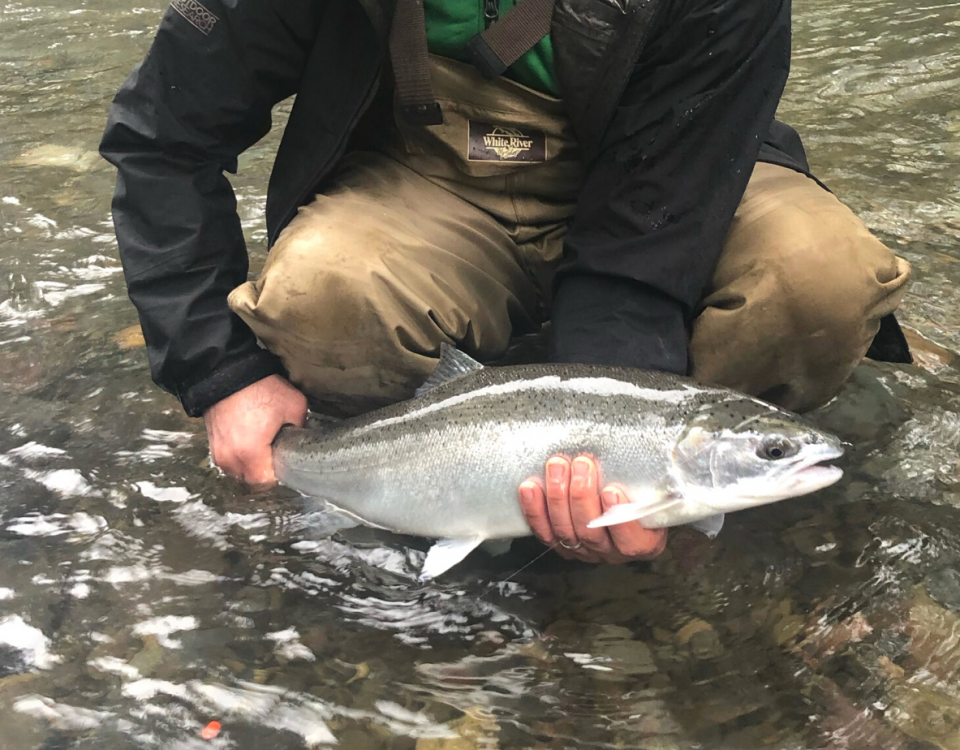
Oregon's North Coast Forests & Salmon
Oregon's North Coast Forests are Some of our Last Salmon Strongholds
The many rivers and streams in Oregon's North Coast forests are especially important habitat for salmon and steelhead. The Tillamook and Clatsop State Forests are home to some of our favorite rivers: the Wilson, Salmonberry, Nehalem, Miami, Trask, and Kilchis, as well as the Tillamook and Nehalem bays. As the State plans for how these forests will be managed for the next seventy years, it's important they provide strong habitat and water quality protects for salmon.
A Habitat Conservation Plan to Protect Salmon in the Tillamook and Clatsop State Forests
The Oregon Department of Forestry (ODF) manages Oregon's state-owned forests to generate annual income to support rural counties and school districts by harvesting trees. In an effort to develop a long-term management strategy that allows timber harvest without causing additional risk to endangered fish and wildlife, including many salmon and steelhead runs, ODF is developing a Habitat Conservation Plan (HCP). The draft HCP uses a balanced approach of conservation and harvest: giving the timber industry a reliable wood supply, sustained employment, and guaranteed annual harvests while also protecting rivers and streams, steep slopes and other important fish and wildlife habitat.
The HCP covers almost 85% of the State's forest land, roughly 640,000 acres in Tillamook, Clatsop, Santiam, and Washington counties. Currently, the draft HCP protects nearly half of that area in Habitat Conservation and Riparian Conservation Areas, while the other half remains open for timber harvest, balancing the often competing interests, providing long-term certainty for rural communities and endangered fish, and reducing overall conflict.
In the remaining plan area outside of the HCAs and RCAs, the State will be able to harvest timber, plant trees, spray pesticides and fertilizers, build and obliterate roads, mine quarries, manage fire, and operate outdoor recreation facilities.
Take Action: Write a Letter to the Editor
What Would the Habitat Conservation Plan Mean for Salmon and Steelhead?
Protected Areas
Stream Buffers
Habitat Improvements
Equipment Restrictions
A Plan to Manage the Tillamook and Clatsop State Forests
In conjunction with the Habitat Conservation Plan, there is also a Forest Management Plan (FMP) being developed. The HCP is endangered species-focused and more directly related to salmon and steelhead recovery, while the FMP is where drinking water and water quality will be focused on more heavily. That being said, it still has a primary focus on endangered species as it dictates with more detail how the forests and land will be managed. For example, it specifies that Species Assessments will be conducted during the development of the implementation plan to inform whether certain species need special consideration or if the existing plan’s conservation strategies are sufficient. However, the habitat conservation areas and riparian conservation areas outlined in the HCP are primarily where salmon and steelhead are focused on. Increasing streamside buffers and ensuring longer rotations will help water quality in addition to their intended benefits for endangered species.
What Would the Management Plan Mean for Salmon and Steelhead?
Habitat Protection
Salmon and Steelhead Recovery
Continual Research
Landslide Resilience





